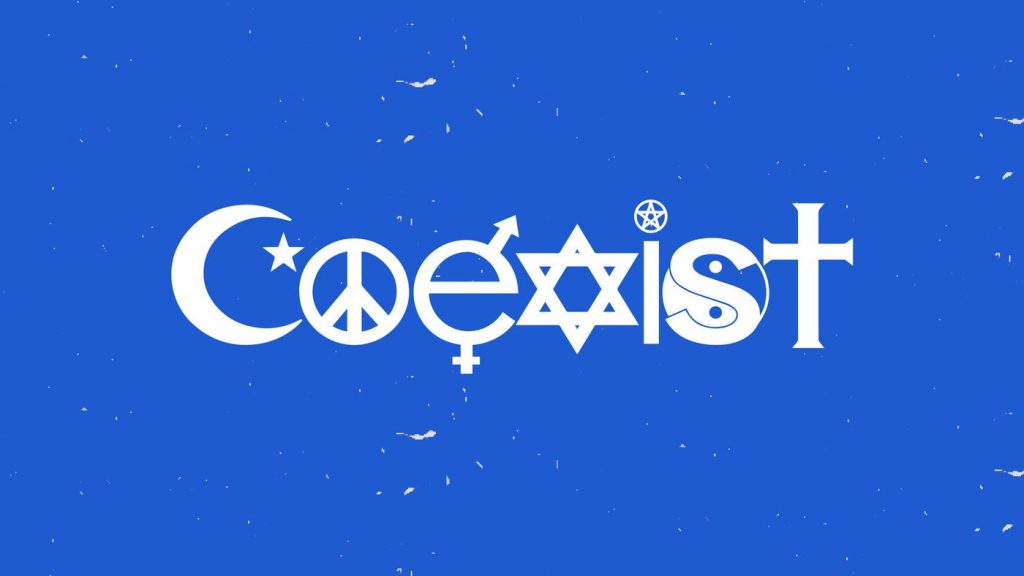
We’ve probably all seem some variation of the above image, but how often have we thought about it, or actually talked about it? If you are curious about the origins of the image, you can read all about it in this article from the website Vox.
The original version of the image, combining only symbols representing Islam, Judaism, and Christianity, was created in 2000 by Polish graphic artist Piotr Młodozeniec for a contest sponsored by a contemporary art museum in Jerusalem to accompany an exhibition with the theme of coexistence. It later became embroiled in copyright and ownership disputes, and the range of symbols included in it was dramatically expanded, so it now can be seen to represent what one critic describes as: “A smorgasbord of religious and political signifiers, with a few seemingly random symbols thrown in for good measure, it’s become its own symbol of a banal, graphically incoherent 21st-century hippie.”
But another take suggests that at its core, the message is one of belief in the existence of spiritual harmony as a virtue, and a call for people of all faiths (and none) to practice tolerance and engage in dialogue. So let’s start with that before we dig a little deeper.
Is interfaith dialogue important, and if so, why? What are the goals of such a dialogue? What are the obstacles? If we enter into serious and honest interfaith dialogue, will it water down our own beliefs?
This last question takes us in a different, and perhaps more challenging direction.
In John 14:6, Jesus says, “I am the way, and the truth, and the life. No one comes to the Father but through me.” Many Christians understand this to mean that Jesus is the sole path to God, salvation and heaven, and that Christianity is the one true religion. By this argument, “Jesus would not coexist,” which is literally the title of this article critical of the entire concept that the image we’re discussing represents. The author of the article, the former rector of an Episcopal church in Wisconsin, writes:
The ubiquitous blue COEXIST bumper sticker incorporates symbols of Islam, pacifism, male and female, Judaism, Wicca, Taoism, and Christianity. … At it core the image represents a belief that spiritual harmony can be wished into existence.
What is not to admire in this goal? Why would a Christian hesitate to display this sticker during a daily commute? …
Jesus cannot coexist with contradictory claims to truth made in other faiths. If Jesus had been content with coexistence he might have escaped crucifixion. We should live peaceably with all people (Rom. 12:18), but we ought not reduce this peace to a glib assertion that all paths lead to God. The assertion that all faiths are the same and there is no exclusive truth is itself a doctrine, and one that excludes all but the universalist. It represents an incoherent quest for tolerance. …
Do you agree with this argument? Do you agree with the sentiment expressed in the interpretation of the passage from John mentioned above? Is there but one path to salvation, if not, how do you understand a text like this one? Finally, do you think that this sense of ‘one true religion’ has been more helpful or harmful in human history?
We’ll talk about all of this in our conversation this evening starting at 7pm at Casa Real in downtown Oxford.